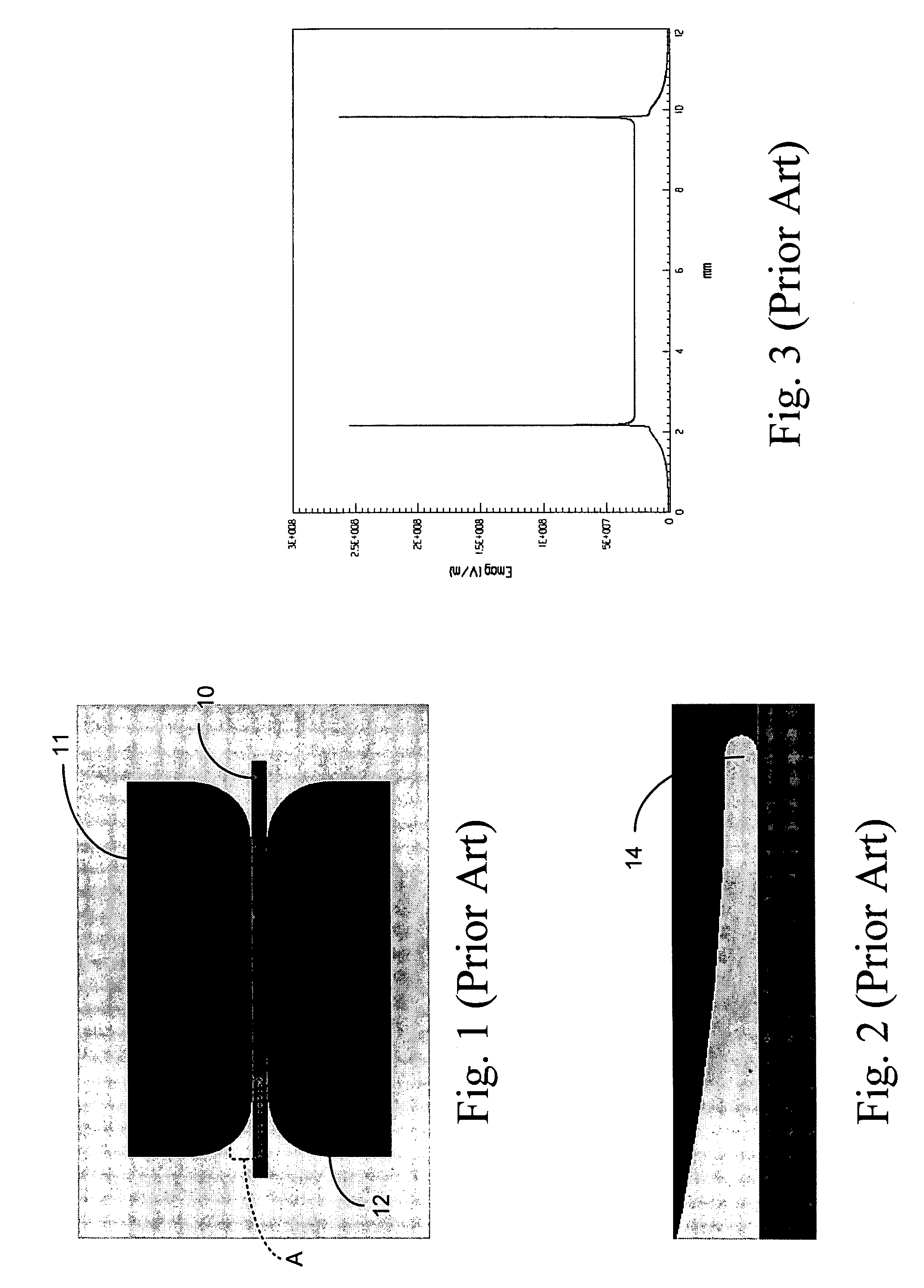Optically initiated silicon carbide high voltage switch
a silicon carbide, high-voltage switch technology, applied in the direction of electrographic process, instrumentation, corona discharge, etc., can solve the problems of short lifetime and variable failure mechanisms
- Summary
- Abstract
- Description
- Claims
- Application Information
AI Technical Summary
Benefits of technology
Problems solved by technology
Method used
Image
Examples
Embodiment Construction
[0029]The photoconductive switch of the present invention improves upon the basic photoconductive switch construction and operation shown in FIG. 7, with enhancements enabling the switch to handle high voltages and high currents with minimum inductance, rapid closure, precise temporal control and the possibility of long life. As such, the photoconductive switch of the present invention shares much the same construction as a basic photoconductive switch shown in FIG. 7 generally having a photoconductive material 21 between two electrodes 22 and 23. Without optical energy injection, i.e. in the dark, the photo-conductive material is an insulator with a large resistance value (much larger than the circuit impedance) and thus the switch essentially blocks current flow. When optical energy is injected and absorbed in the photoconductive material, the switch resistance drops to a small value (much less than the circuit impedance) and the switch conducts current. Thus the basic photoconduc...
PUM
| Property | Measurement | Unit |
|---|---|---|
| dielectric strength | aaaaa | aaaaa |
| dielectric strength | aaaaa | aaaaa |
| photoconductive | aaaaa | aaaaa |
Abstract
Description
Claims
Application Information
 Login to View More
Login to View More - R&D
- Intellectual Property
- Life Sciences
- Materials
- Tech Scout
- Unparalleled Data Quality
- Higher Quality Content
- 60% Fewer Hallucinations
Browse by: Latest US Patents, China's latest patents, Technical Efficacy Thesaurus, Application Domain, Technology Topic, Popular Technical Reports.
© 2025 PatSnap. All rights reserved.Legal|Privacy policy|Modern Slavery Act Transparency Statement|Sitemap|About US| Contact US: help@patsnap.com



